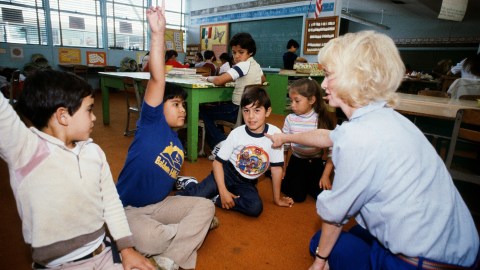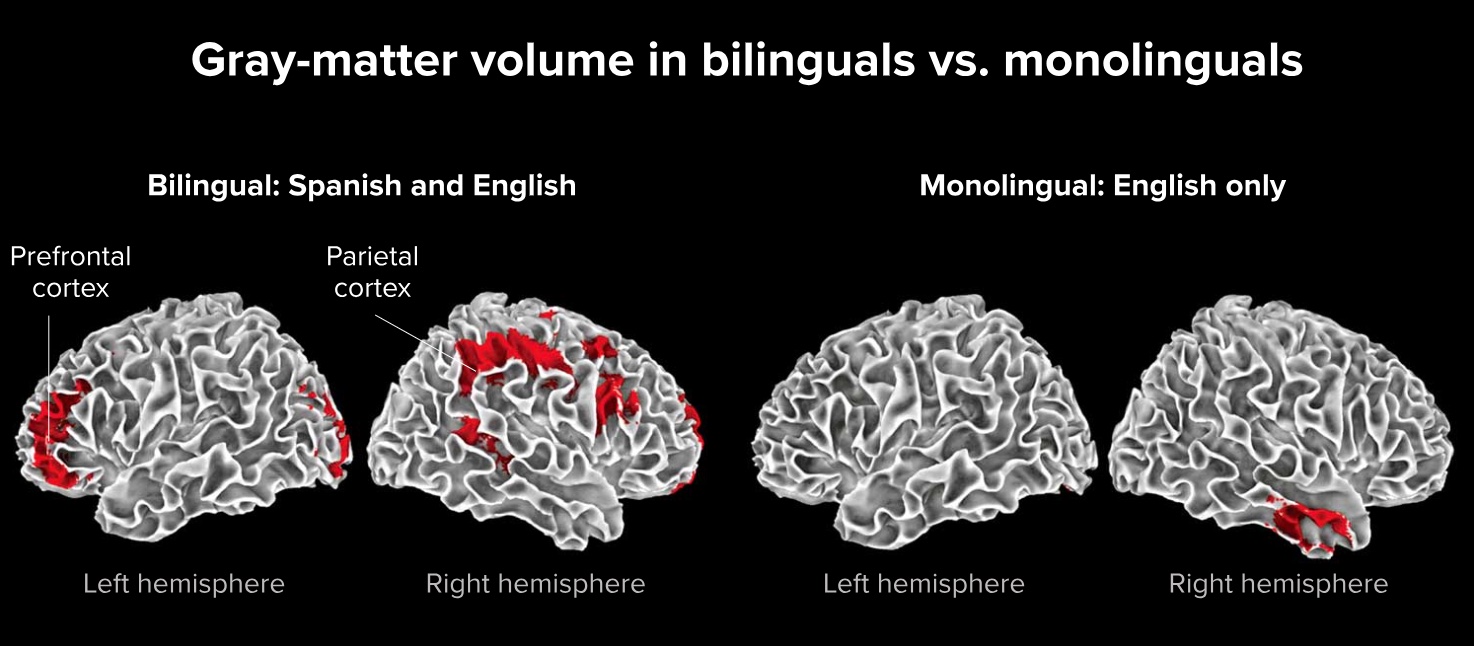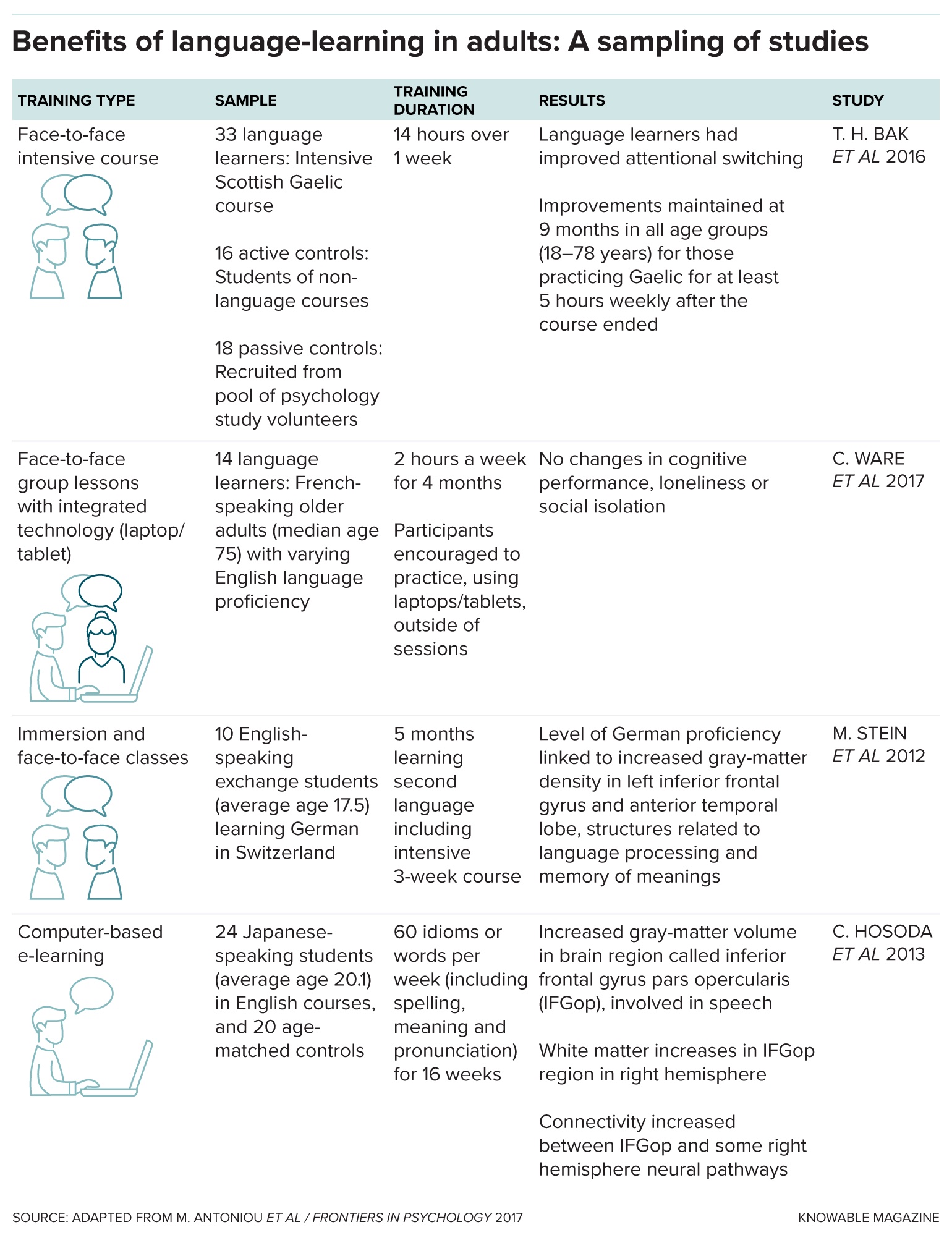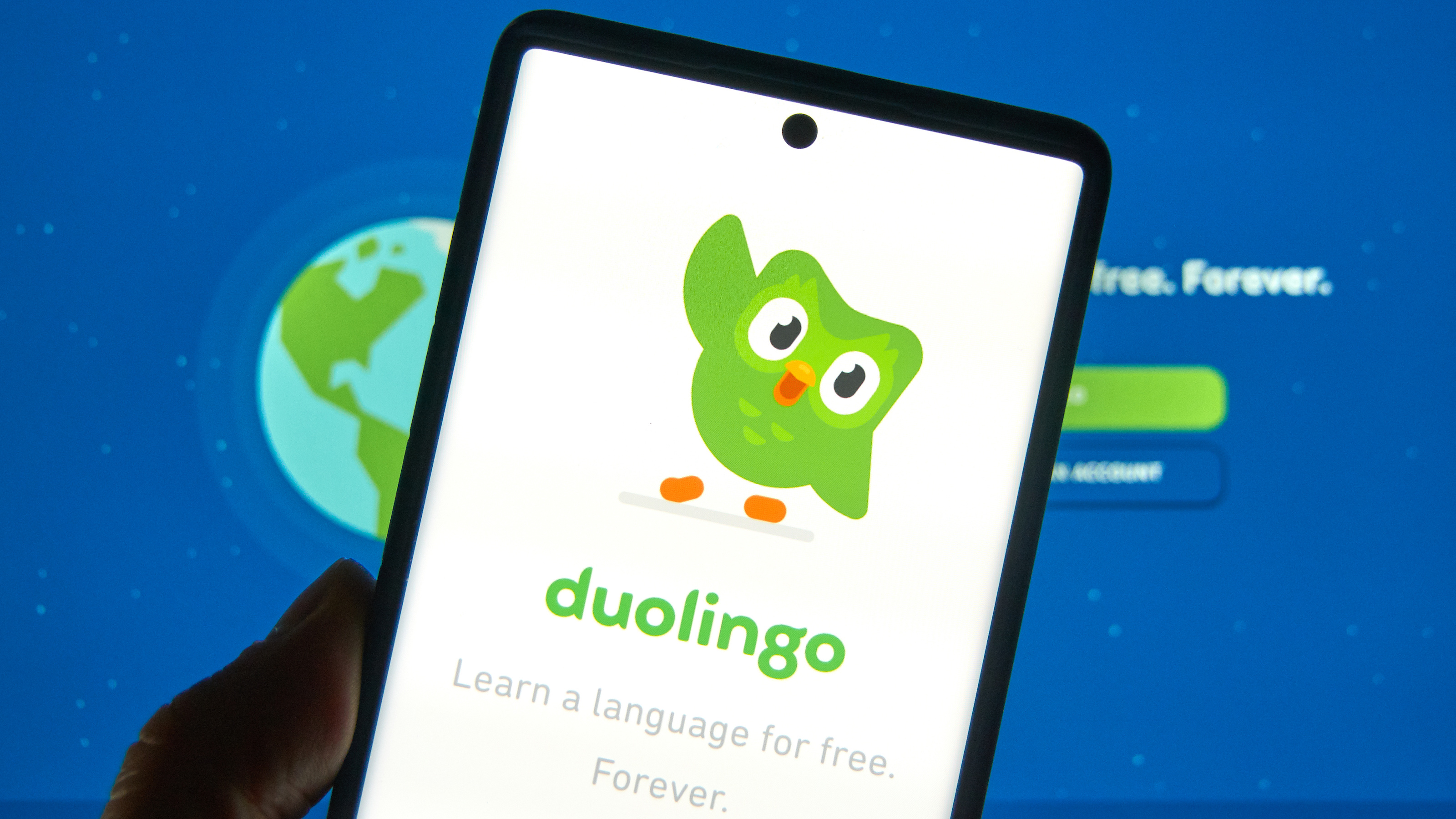How a second language can boost the brain

ven when you’re fluent in two languages, it can be a challenge to switch back and forth smoothly between them. It’s common to mangle a split verb in Spanish, use the wrong preposition in English, or lose sight of the connection between the beginning and end of a long German sentence. So — does mastering a second language hone our multitasking skills or merely muddle us up?
This debate has been pitting linguists and psychologists against one another since the 1920s, when many experts thought that bilingual children were fated to suffer cognitive impairments later in life. But the science has marched on. In the Annual Review of Linguistics, psycholinguist Mark Antoniou of Western Sydney University in Australia outlines how bilingualism — as he defines it, using at least two languages in your daily life — might benefit our brains, especially as we age. He addresses how best to teach languages to children and lays out evidence that multiple-language use on a regular basis may help delay the onset of Alzheimer’s disease. This conversation has been edited for length and clarity.
What are the benefits of bilingualism?
I’m interested in the interaction between language-learning and cognition — the mental processes of the brain. The cognitive benefits of bilingualism can begin from experiences very early in childhood and can persist throughout life.
The first main advantage involves what’s loosely referred to as executive function. This describes skills that allow you to control, direct and manage your attention, as well as your ability to plan. It also helps you ignore irrelevant information and focus on what’s important. Because a bilingual person has mastery of two languages, and the languages are activated automatically and subconsciously, the person is constantly managing the interference of the languages so that she or he doesn’t say the wrong word in the wrong language at the wrong time.
The brain areas responsible for that are also used when you’re trying to complete a task while there are distractions. The task could have nothing to do with language; it could be trying to listen to something in a noisy environment or doing some visual task. The muscle memory developed from using two languages also can apply to different skills.
Where are these benefits expressed in the brain?
Executive functions are the most complex brain functions — the most “human” functions that separate us from apes and other animals. They’re often observed in parts of the brain that are the newest, in evolutionary terms: the prefrontal cortex, which is responsible for advanced processing; the bilateral supramarginal gyri, which play a role in linking words and meanings; and the anterior cingulate. Studies show that the bilingual experience alters the structure of these areas.
First of all, we see increases in gray matter volume. The brain is made up of cells called neurons, which each have a cell body and little branching connections called dendrites. Gray matter refers to how many cell bodies and dendrites there are. Bilingual experience makes gray matter denser, so you have more cells. This is an indication of a healthier brain.

Bilingualism also affects white matter, a fatty substance that covers axons, which are the main projections coming out from neurons to connect them to other neurons. White matter allows messages to travel fast and efficiently across networks of nerves and to the brain. Bilingualism promotes the integrity of white matter as you age. It gives you more neurons to play with, and it strengthens or maintains the connections between them so that communication can happen optimally.
Can teaching children two languages delay or confuse their understanding?
These myths about bilingualism date back to studies in the US and the UK from the First and Second World Wars. They were seriously flawed studies involving children from war-torn countries: refugees, orphans and, in some cases, even children who were in concentration camps. Their schooling had been disrupted for years. They may have suffered traumas, and then they participated in these studies with tests measuring their verbal language abilities.
Unsurprisingly, they scored very poorly on these tests. Did the researchers attribute the poor scores to post-traumatic stress disorder (PTSD)? They probably didn’t even know what that was. No, instead they attributed it to the children’s bilingualism.
It wasn’t until the 1960s, when a really important study was published by Elizabeth Peal and Wallace Lambert at McGill University in Montreal, that views started to shift. Their findings showed that not only do bilingual children not have a cognitive delay or mental retardation but that their bilingualism actually has some cognitive benefits.
In addition to executive function, bilingual individuals and children show advantages in metalinguistic awareness. This is the ability to think about language as abstract units and associations. A good example is the letter H, which is associated with the sound “he” in English, with “n” as in “nickel” in Russian, and with the vowel sound “e” in Greek. There’s nothing special about H that makes it have to have a “he” sound; a bilingual person understands this more readily than a monolingual person does.

What do the skeptics argue?
The original findings about bilingual advantages to executive function in the 1960s generated a lot of excitement and media interest. Perhaps the advantages were overstated or misinterpreted. Not every bilingual person is going to have a healthier brain than every monolingual person. We’re talking about general, population-level trends.
We see evidence of bilingual advantages in children, but not always. And as we move into young adults, say, in their 20s, it becomes more difficult to detect these advantages. This makes sense in terms of brain maturation: When you’re a child, your brain is still developing, but when you reach young adulthood, your brain is at its peak, so bilingualism doesn’t give you much extra.
Learning languages as a child is different than doing so later in life, right?
It depends. For a long time, it was thought that the only way to really learn a language was to do it early. It was thought that after adolescence, you couldn’t learn a language perfectly. You were always going to be accented. But we now know that that’s not true, because there are many people who learn languages as adults, and they learn them very well. So this has led us to reexamine what it is about learning a language during childhood that makes it different from adulthood.
Is your brain more ready and more flexible — what we call more “plastic” — when you’re a child, and then it becomes more rigid and fixed as an adult? Or is it that the conditions of language-learning are different when you’re a child, in terms of the amount and type of input you receive, how much slack you’re afforded and how much encouragement others give you? An adult who is working two jobs and going to language classes at 7 o’clock at night has a different type of acquisition than a child constantly receiving input from the mother, grandmother, father or other primary caregiver.
Ultimately, the difference between language-learning in children and adults is probably some combination of the two: plasticity and conditions. There are also individual differences. If you put different people in the same situation, some people will flourish and others will struggle.
Does a bilingual brain age differently than a monolingual one?
We know from studies that starting at the age of about 25, your brain starts to decline, in terms of working memory, efficiency, processing speed, those kinds of things. As you age, these declines become steeper. The argument is that as we get into older age, bilingualism puts the brakes on and makes that decline less steep. Evidence from older adults is the strongest kind supporting a bilingual advantage. (The second strongest comes from children.)
When you look at bilingual individuals who have suffered neurodegeneration, their brains look damaged. From their brain scans, you’d think these people should be more forgetful, or that they shouldn’t be coping as well as they are. But that’s not the case. A bilingual brain can compensate for brain deterioration by using alternative brain networks and connections when original pathways have been destroyed. Researchers call this theory “cognitive compensation” and conclude that it occurs because bilingualism promotes the health of both gray and white matter.

Could learning a language later in life keep Alzheimer’s at bay?
That is a working hypothesis. We’re doing studies where we teach a foreign language to people aged 65 and up with the goal of promoting healthy brain function, even at such a late point in life. What we’re testing is: Can we help people in old age by using language-learning? Does that give you some benefit in terms of a “use it or lose it” approach to brain health?
The initial signs are encouraging. Preliminary data look good. It seems that learning a language in later life results in positive cognitive outcomes.
Because language-learning and use is so complex — arguably the most complex behavior we human beings engage in — it involves many levels. You have speech sounds, syllables, words, grammar, sentences, syntax. There’s so much going on; it really is a workout for a wide brain network. And those areas of the brain overlap with the ones in which aging adult brains show decline or neurological pathological disease. As a result, we argue that learning a second language would be an optimal activity to promote healthy aging.
But not enough studies have been done to settle this once and for all. And we don’t know any of the details. How much language experience is needed? Does it matter which languages you learn? Do you need to achieve a certain level of proficiency? We don’t have answers to these questions.
What advice do you have for parents raising bilingual children?
My advice would be to be encouraging and patient. Bilingual children have a tougher task than those learning only a single language. They’re learning two sets of vocabulary and speech sounds. It can be challenging for those of us living in a country with a dominant language to establish a functional purpose for the second language. A child needs to feel that the language is practical and has a use. Grandparents are great for this, and so is living in a community where there are cultural events or schools where children can be immersed in the second language.
Another concern parents bring up is worrying that their child might be mixing the languages. Don’t worry about what we refer to as “code mixing.” It’s a perfectly normal part of bilingual development. They’re not confused. It’s thought to be a sign of bilingual proficiency or competence to mix up the languages.
What other research are you doing in this area?
I’m interested in trying to understand why sometimes we see a bilingual effect, and other times we don’t. In one article, I proposed that maybe the language pairing matters. If you speak two distant languages, like Mandarin Chinese and English, would that result in similar types of brain changes as speaking two closely related languages, like German and English?
Maybe if the languages are closely related, they’re competing more and you have a harder job of separating them, to avoid using the wrong word at the wrong time. Maybe if they’re more distant, then you can’t rely on prior knowledge from learning the first one to learn the second. In that case, you’re starting from scratch with the second language, and that’s more effortful at the initial learning stages. But once you’ve learned the two languages, perhaps there’s less competition.
This article originally appeared in Knowable Magazine, a nonprofit publication dedicated to making scientific knowledge accessible to all. Sign up for Knowable Magazine’s newsletter.





